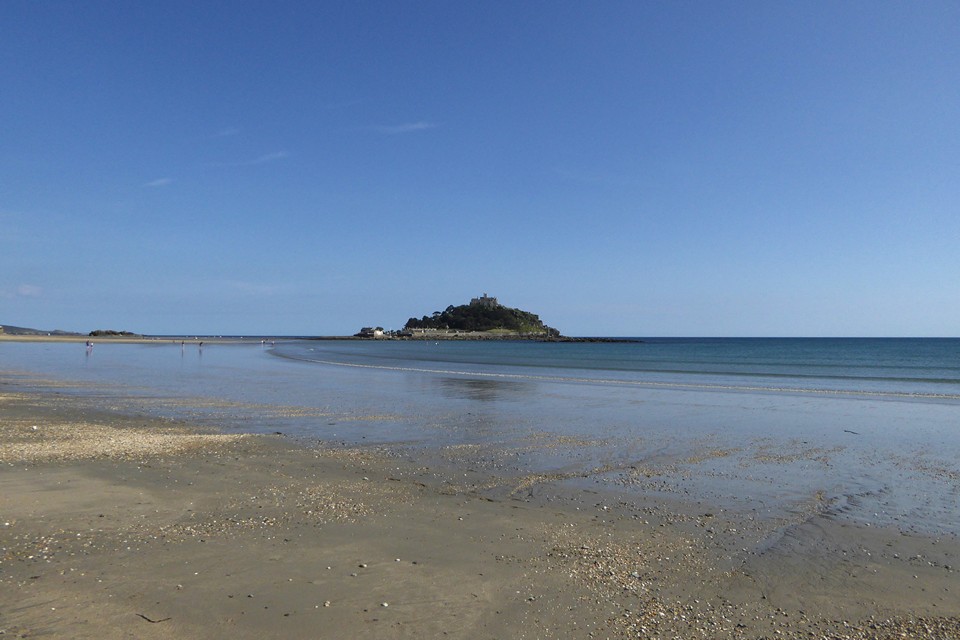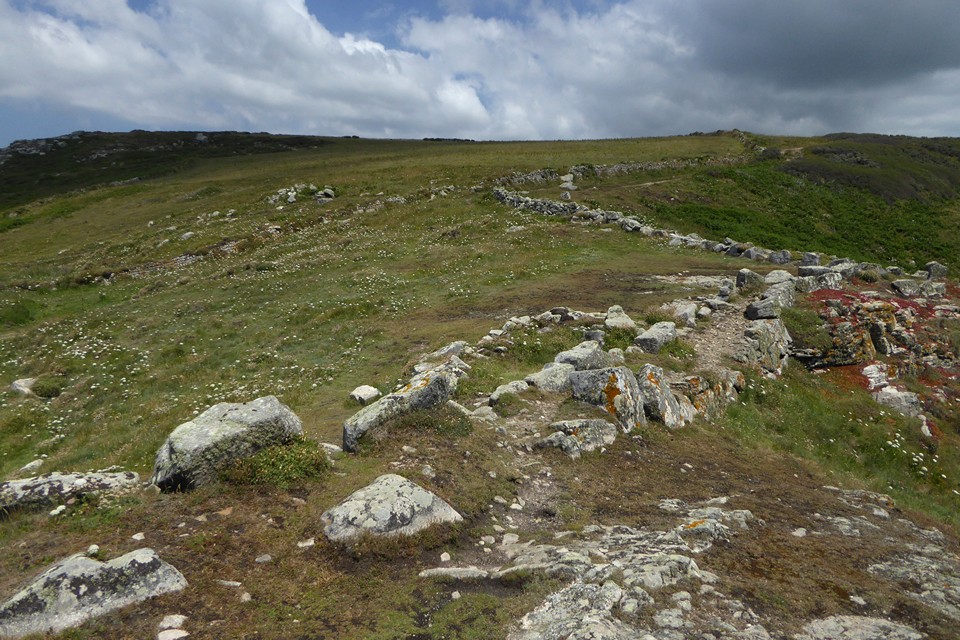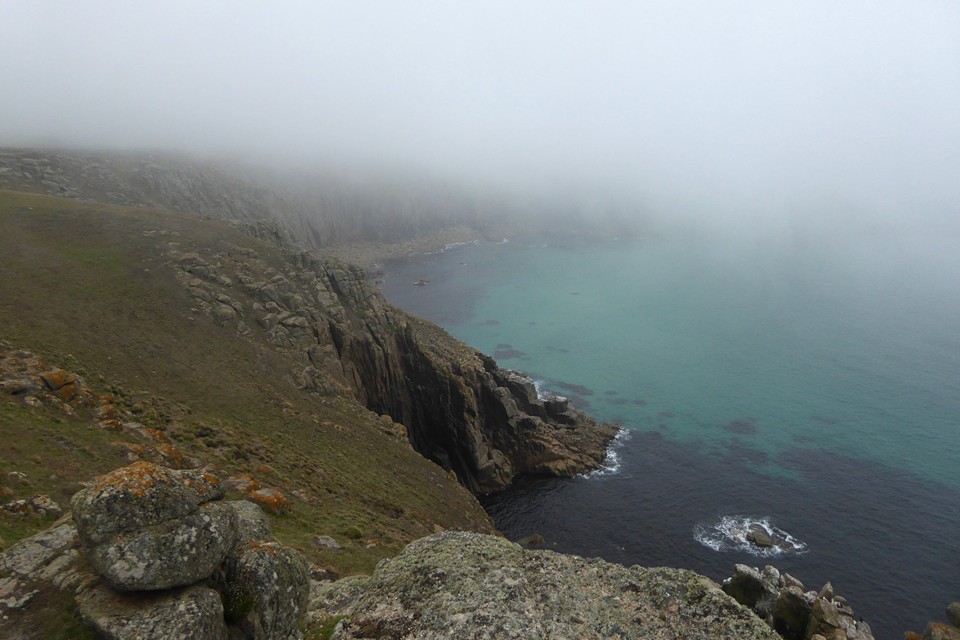
Row of upright stones within Piercefield Camp. Although these look artificially straight, I think they are part of the natural geology of the site.

Row of upright stones within Piercefield Camp. Although these look artificially straight, I think they are part of the natural geology of the site.

Stone rampart on the northwestern side of Piercefield Camp. The canopy is dense and the light dim at this time of year.


Well-preserved bank of Piercefield Wood Camp. Most of this smaller earthwork is inaccessibly overgrown in July.
From the CASPN website:
On Thursday 1st June, CASPN received a very concerning message from a member of the public that there had been an attack on Mên Scryfa, an inscribed stone that stands below Carn Galva (& probably formerly a Bronze Age menhir). Someone had poured petrol (or similar liquid) over the top of the stone and set it on fire – blackening the top part of the stone’s north side and burning off all the lichen from that part of the stone. In addition, someone had also dug around the base of the stone to a depth of about 20cm (4”).
CASPN immediately contacted the police and other authorities to report this mindless act of vandalism against a scheduled monument. I visited Mên Scryfa on Friday to see the damage for myself – and am just so shocked and disappointed that anyone would want to do such a thing to one of our precious ancient sites.
James Kitto
Chair of CASPN* Postscript: We now know that this dreadful attack took place before the afternoon of Sunday 28th May. Any further information may be shared with CASPN or reported to the police.
Dig One (2021) at Boden Fogou.
Webpages dedicated to the ongoing excavations at Boden Fogou. We were treated to a tour of the site today.
I hadn’t realised that the resurrected Time Team did a dig there in 2021.





Such a great kerb on this cairn, worthy of a Scillonian entrance grave. Shame we’ll never know if it had a central chamber like nearby Bosiliak.

Stone flanking the outer gate. The northwestern arc of the outer rampart continues over to the right, covered in dense vegetation that hasn’t been cleared for many years.

Cupmark on the capstone. Looking towards Carn Kenidjack and Carn Bean.

The approach over summer downs.


Looking from Stone 4 towards Stone 5.

Looking towards Tregeseal stone circle, with St Just beyond.

Focusing on the collection of recumbent stones around the edge of the circle. These intrigue me more each time I visit.
Around 40 standing stones thought to have been erected by prehistoric humans 7,000 years ago have been destroyed near a famed archaeological site in northwest France to make way for a DIY store, an angry local historian has revealed.
But local archaeologist Obeltz believes local authorities failed to properly investigate.
“There weren’t archaeological excavations in order to know if the stones were menhirs or not,” he said.
“We’re witnessing a series of failings. The state no longer protects our fellow citizens or our heritage. Appalling,” far-right leader Marine Le Pen said on Twitter.
When contacted, the Mr. Bricolage group said it “sincerely regretted the situation” but pointed to authorisations for its store granted last year.
france24.com/en/live-news/20230608-anger-as-pre-historic-stones-destroyed-for-french-diy-store

Midsummer afternoon, from Marazion beach.

Looking southeast towards Porthleven.


Looking west; West Penwith over on the left, Cudden Point in the centre, Rinsey Head on the right.

Showing kerb stones on the edge of the cairn, to the right of the chamber.

Looking uphill towards the cairn (centre) from the field system on the headland.

Semi-circular feature next to the ancient field boundary on the headland, which I didn’t notice when we were here 11 years earlier.

Midsummer, Trewavas Cliff. The path cuts through the edge of the cairn, and I think the exposed stone in the path itself may be part of the kerb.

Bronze (Age) plaque.

Thin side. The crack where the top broke off and was fixed back on is clearly visible.




Looking east from atop the rock towards Bodmin Moor; Roughtor and Brown Willy are on the left skyline, the tors above Minions and Caradon Hill to the right.

Even without the bonkers chapel this is a very cool place.


Approaching from the southeast.



Looking north towards Roche (Roche Rock is centre of image). The stone on top of the barrow is a boundary marker.

Looking west across the active china clay quarries.

This is a magnificent round barrow, one of the best in Cornwall. For thousands of years it stood atop the highest hill for many miles around (the highest point in Cornwall outside Bodmin Moor) but now it’s dwarfed by the spoil heaps of the china clay quarries and its 360 degree views have been cut off.

Looking down on the barrow (centre, with white-painted trig) from the artificial slopes of Hensbarrow Downs. Roche is below to the right.





What appears to be a shallower bank and ditch to the northeast of the fort.

From Trevilley Cliff to the northwest, across Nanjizal.
